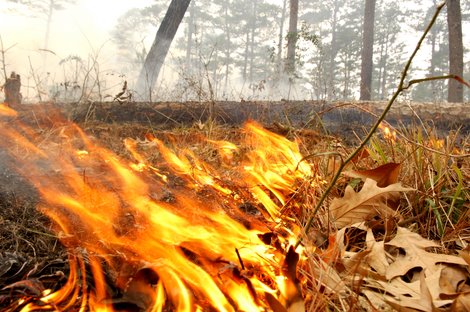
Fire was a natural ecological factor on much of United States prior to European settlement. As a result, native vegetation is well adapted to burning. Fire effectively supresses most woody plants while encouraging grass and forb growth. However, for fire to benefit white-tailed deer it must be used in concert with sound range and wildlife management. Although fire is often feared by unknowing landowners, it is one of the most effective deer management tools ever. And it’s totally natural!
Prescribed burning, sometimes referred to as controlled burning, follows guidelines that establish the conditions and manner under which fire will be applied on a specific area to accomplish specific management objectives. Prescribed burning directly contrast with wild fires that can occur at any time fuels will burn, often under very hazardous (difficult to control) conditions.
The conditions selected for a prescribed burn, such as season, vegetational growth stage, and weather factors, must be conducive to safe and effective burning. Management objectives determine the fire characteristics needed to maximize benefits, minimize damage, and conduct a safe burn.
Timing of a burn, in addition to the frequency, will impact both short and long-term results and have varying effects on the habitat. The most commonly recognized management objectives that can be accomplished using prescribed burning for deer include:
1. Increased production of grass forage (for grazing and fawning cover) and deer browse.
2. Suppression of most brush (to keep within reach of deer) and cacti species.
3. Control of selected forbs and/or grass species.
4. Improved herbaceous composition.
5. Improved grazing distribution if livestock and wildlife.
6. Increased available forage and browse.
7. Improved forage quality and/or palatability.
8. Increased animal production.
9. Removal of excess mulch, debris, and other dead organic matter.
10. Improved nutrient cycling.